Surface Quality Testing
Surface quality means different thing to different people. It depends on product, application, manufacturing methods, etc. In simple terms surface quality refers to topography of surfaces. The topography can be defined in terms of roughness, reflectivity, image clarity, etc. Surface quality sometimes also refers to performance of surfaces like scratch resistance, stone chip resistance, abrasion resistance, etc.
Capability – At Touchstone Testing Labs, we have capability to measure several surface related properties. Equipment are available to measure following surface properties.
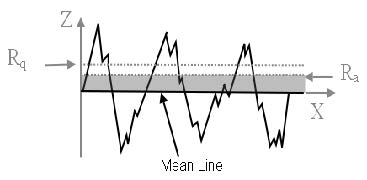 Surface topography, also known as surface finish or surface roughness, is the extent of deviations of a surface from a perfectly flat surface. It is generally measured in terms of surface roughness and surface waviness. Surface roughness is measured generally in one direction using a stylus (mechanical or laser). The roughness trace, which is basically the amplitude of up and down movement of a stylus over a fixed length is recoded and reduced in to different roughness parameters such as RA, RZ, Rrms, etc. RA is the arithmetic mean of the amplitude about a mean position, while Rrms is the root mean square value of the amplitude. RZ is the arithmetic average of peak to valley depth over a defined trace length. Roughness is a simple and most common way of describing the surface texture or topography. However, surface texture is anything but simple. There are other features of the surface texture can become important in certain applications. One such parameter is waviness of the surface. It is defined as irregularity whose spacing is broader than the roughness trace length. It is measured by scanning the surface in multiple locations and integrating all the traces over an area and reducing the data to waviness parameters such as Wa and Wt for average and total waviness and Wsm for mean spacing of waviness. At Touchstone testing laboratory we use mechanical stylus equipment to measure roughness parameters.
Surface topography, also known as surface finish or surface roughness, is the extent of deviations of a surface from a perfectly flat surface. It is generally measured in terms of surface roughness and surface waviness. Surface roughness is measured generally in one direction using a stylus (mechanical or laser). The roughness trace, which is basically the amplitude of up and down movement of a stylus over a fixed length is recoded and reduced in to different roughness parameters such as RA, RZ, Rrms, etc. RA is the arithmetic mean of the amplitude about a mean position, while Rrms is the root mean square value of the amplitude. RZ is the arithmetic average of peak to valley depth over a defined trace length. Roughness is a simple and most common way of describing the surface texture or topography. However, surface texture is anything but simple. There are other features of the surface texture can become important in certain applications. One such parameter is waviness of the surface. It is defined as irregularity whose spacing is broader than the roughness trace length. It is measured by scanning the surface in multiple locations and integrating all the traces over an area and reducing the data to waviness parameters such as Wa and Wt for average and total waviness and Wsm for mean spacing of waviness. At Touchstone testing laboratory we use mechanical stylus equipment to measure roughness parameters.
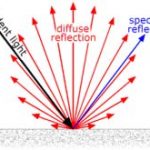 Gloss is basically a measure of how flat a surface is. Flatter the surface higher will be specular reflectivity. Thus, gloss and surface texture are strongly correlated. Many applications require highly reflective surfaces either in coated or uncoated state. Coatings can be metallic, organic and inorganic coatings. Gloss does not only represent visual or aesthetic aspects of products like building panels, but also functional aspects in many applications like solar panels, automotive trims, etc. At Touchstone testing laboratory we have capability to measure gloss of coated and uncoated surface of products using various Gloss meters. Gloss meters basically measure amount of specular reflection as a percentage of incident light intensity.
Gloss is basically a measure of how flat a surface is. Flatter the surface higher will be specular reflectivity. Thus, gloss and surface texture are strongly correlated. Many applications require highly reflective surfaces either in coated or uncoated state. Coatings can be metallic, organic and inorganic coatings. Gloss does not only represent visual or aesthetic aspects of products like building panels, but also functional aspects in many applications like solar panels, automotive trims, etc. At Touchstone testing laboratory we have capability to measure gloss of coated and uncoated surface of products using various Gloss meters. Gloss meters basically measure amount of specular reflection as a percentage of incident light intensity.
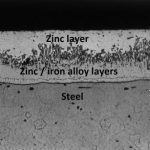 Coating thickness. Majority of products are used with a coating on the surface either to improve durability or to impart certain functionality like scratch resistance, etc. Several different types of coatings are used. Major coatings are organic like paints or metallic like electroplates. There are also inorganic coatings like glass coating, enamels, etc. It is important to know the thickness of the coating for optimizing cost, functionality, etc. Many methods are used to measure the thickness of coating. These methods depend on the type of coatings, thickness of the coating, etc. At Touchstone testing laboratory we use several methods to measure coating thickness. These can be classified in to microscopic methods and mechanical methods. In microscopic method the coating thickness is measured using a microscope with graduated reticule on a cut sample of coated materials, which is mounted, polished and etched if necessary. This method can be used for all but Nano coatings. However, this is very labor intensive. Several mechanical methods are available that uses some physical properties like electrical conductivity, magnetic properties of coatings and substrates. At Touchstone testing laboratory we also use a magnetic gage and an electromagnetic gage for coating thickness measurements. Mechanical methods generally are not available for all substrates and coatings.
Coating thickness. Majority of products are used with a coating on the surface either to improve durability or to impart certain functionality like scratch resistance, etc. Several different types of coatings are used. Major coatings are organic like paints or metallic like electroplates. There are also inorganic coatings like glass coating, enamels, etc. It is important to know the thickness of the coating for optimizing cost, functionality, etc. Many methods are used to measure the thickness of coating. These methods depend on the type of coatings, thickness of the coating, etc. At Touchstone testing laboratory we use several methods to measure coating thickness. These can be classified in to microscopic methods and mechanical methods. In microscopic method the coating thickness is measured using a microscope with graduated reticule on a cut sample of coated materials, which is mounted, polished and etched if necessary. This method can be used for all but Nano coatings. However, this is very labor intensive. Several mechanical methods are available that uses some physical properties like electrical conductivity, magnetic properties of coatings and substrates. At Touchstone testing laboratory we also use a magnetic gage and an electromagnetic gage for coating thickness measurements. Mechanical methods generally are not available for all substrates and coatings.
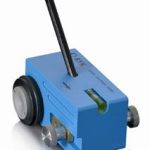 Scratch resistance can be defined as the ability of a product surface to remain intact when subjected to regular wear and tear. Many products today are bought and sold not just only for functionality, but also for aesthetics. For example, an expensive automobile or transportation equipment or cellular phones is expected to retain the original gloss and luster for long period. Thus, the surface of the product must be scratch resistant. Some products may be coated and other may still have the bare substrate. In either case scratch resistance is important. Scratch resistance can be evaluated in terms of gloss reduction, haze, magnitude of deformation, resistance towards deformation, weight loss or color change of the substrate. Generally, scratch hardness is measured by moving a sharp object under a known pressure over the test surface. The result may either be the value of the pressure required to scratch through the test material if a scratching tool of constant hardness is used, or the hardness of the scratching tool is varied while constant pressure is applied. At touchstone testing laboratory we use pencil hardness method to assess the scratch resistance of pain coatings. For harder coatings or substrates, we use regular falling sand test or shot blasting to assess scratch resistance through both visual and gravimetric methods.
Scratch resistance can be defined as the ability of a product surface to remain intact when subjected to regular wear and tear. Many products today are bought and sold not just only for functionality, but also for aesthetics. For example, an expensive automobile or transportation equipment or cellular phones is expected to retain the original gloss and luster for long period. Thus, the surface of the product must be scratch resistant. Some products may be coated and other may still have the bare substrate. In either case scratch resistance is important. Scratch resistance can be evaluated in terms of gloss reduction, haze, magnitude of deformation, resistance towards deformation, weight loss or color change of the substrate. Generally, scratch hardness is measured by moving a sharp object under a known pressure over the test surface. The result may either be the value of the pressure required to scratch through the test material if a scratching tool of constant hardness is used, or the hardness of the scratching tool is varied while constant pressure is applied. At touchstone testing laboratory we use pencil hardness method to assess the scratch resistance of pain coatings. For harder coatings or substrates, we use regular falling sand test or shot blasting to assess scratch resistance through both visual and gravimetric methods.
Erosion and abrasion resistance is another property of product surface, coated or uncoated, defined as resistance to sliding wear or impact wear. It is measured generally by two methods namely, falling sand test and tabor rotary abrasion test. At Touchstone testing lab we use a falling sand test unit to measure erosion and abrasion of the coatings or substrates. In falling sand test predetermined sand particles are dropped from a fixed height through a guide tube at a steady rate on to a sample positioned at 45 degrees to the direction of stream. The amount of sand required to erode a coating or a substrate is measured and quoted as resistance number. Also, weight loss of the materials may be used as a measure of resistance to erosion and wear. If the substrate is very hard then silicon carbide is used as a wear medium instead of silica sand.
Some relevant standards:
- ASTN D523 – Standard Test Method for Specular Gloss
- ASTM D968 – Standard Test Methods for Abrasion Resistance of Organic Coatings by Falling Abrasive
- ASTM D1005 – Standard Test Method for Measurement of Dry-Film Thickness of OrganicCoatings Using Micrometers
- ASTM D7027 – Standard Test Method for Evaluation of Scratch Resistance of PolymericCoatings and Plastics Using an Instrumented Scratch Machine
- ASTM D7127 – Standard Test Method for Measurement of Surface Roughness of AbrasiveBlast Cleaned Metal Surfaces Using a Portable Stylus Instrument
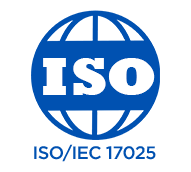
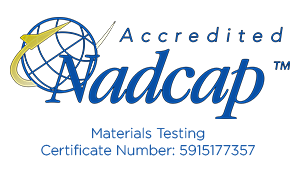
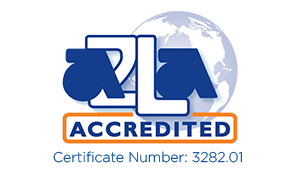
Touchstone is committed to providing its customers with quality, reliable test results. That is why we have undertaken the rigorous steps needed to meet and secure the most stringent of test lab accreditations including ISO/IEC 17025, NADCAP 7101 (Materials Test Lab) and NADCAP 7122-I (Non-Metallics Materials Testing).
© 2024, Touchstone Testing Labs | Design by Wheelhouse Creative

